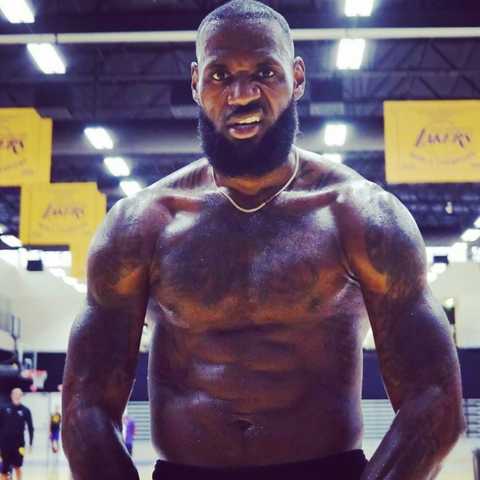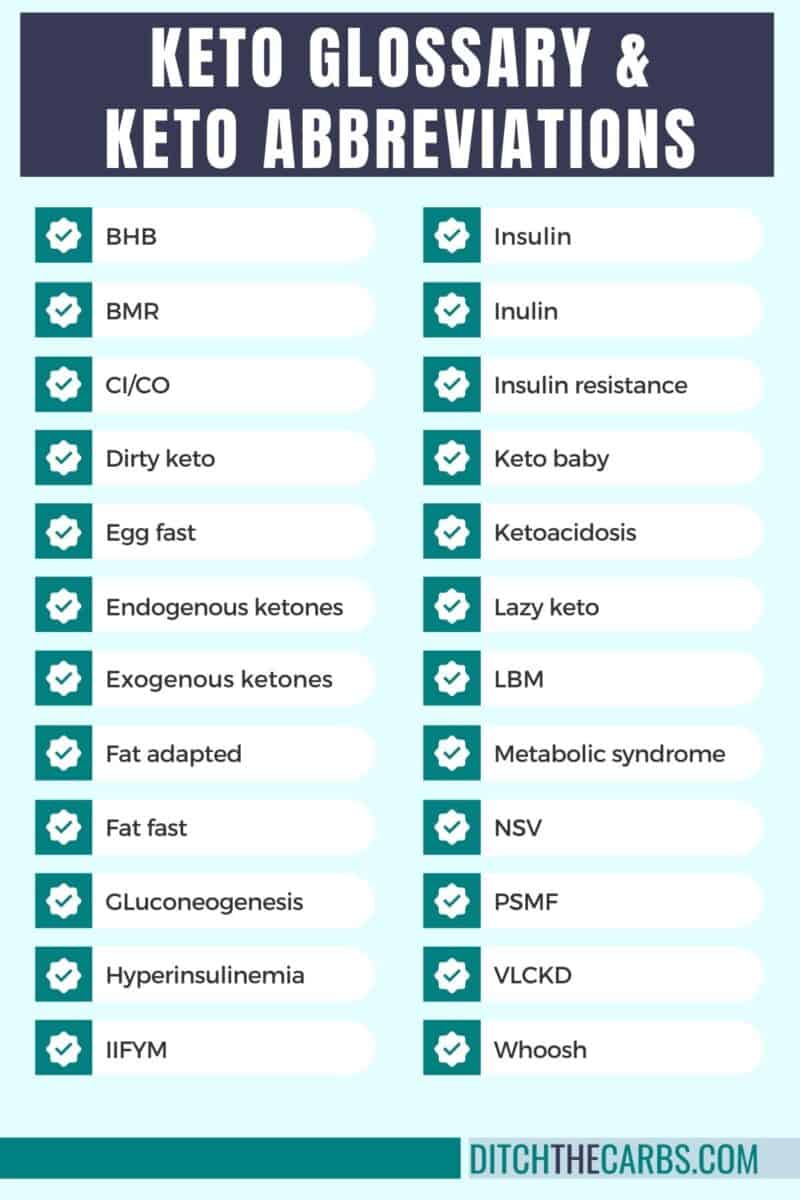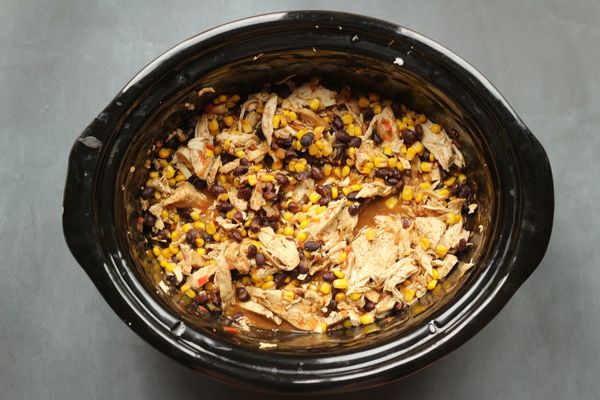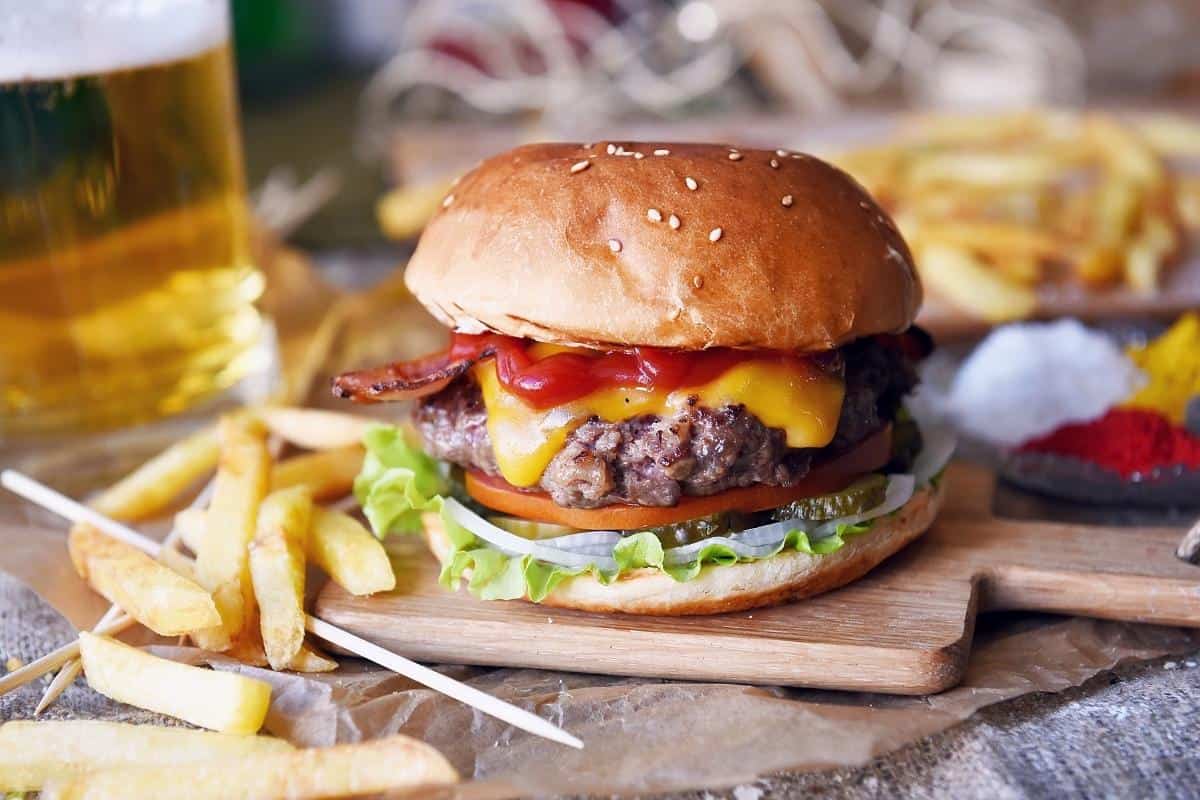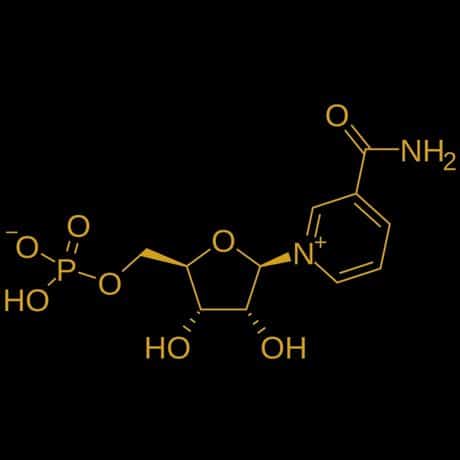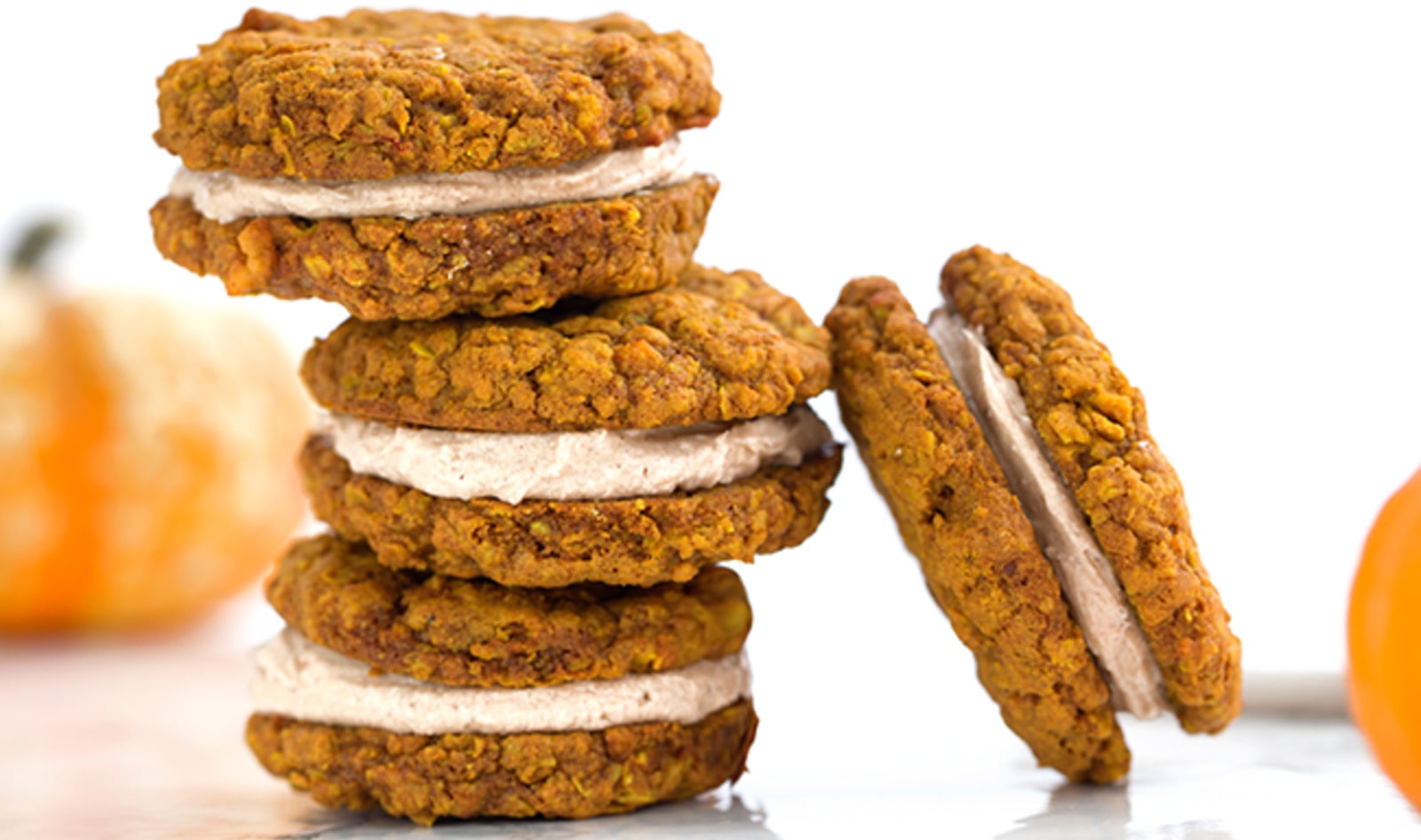After a successful fat-loss phase, no one wants to ruin it with a few weeks of bad eating. Unfortunately, that is the reality for many dieters. The truth is, fat loss is only half the battle. Keeping it off is often the hardest part.
But what if there was an effective way to maintain your fat loss in a healthy, sustainable way? The good news is, there is! Reverse dieting is the key to ensuring your discipline and fat loss results don’t go to waste.
In this article, we will discuss:
- What is reverse dieting and how does it work?
- Can you lose weight on a reverse diet?
- Benefits and downsides of a reverse diet
- How to successfully do a reverse diet
- Who should and shouldn’t do a reverse diet
- How long does it take to do a reverse diet?
- What to do after a reverse diet
- Reverse dieting FAQs

What is Reverse Dieting?
Let’s get into the main question on everyone’s minds: What is a reverse diet? Reverse dieting is a nutrition strategy that helps you navigate food choices following a fat-loss phase. Essentially, it is the diet after the diet.
However, instead of reducing calories over many weeks to lose weight as you would with a traditional diet, like the metabolic confusion diet, for example, a reverse diet has you add calories. The goal is to systematically re-introduce calories from carbohydrates and fat, limiting fat accumulation while slowly gaining a little weight and restoring a healthy, speedy metabolism.
This method originated in the bodybuilding community as a way to handle nutrition following a competition. A common issue that bodybuilders and fitness competitors face is that they will diet hard for prolonged periods, getting into the best shape of their lives, only to ruin it within a couple of weeks of ending their diet.
After a long fat-loss phase, the body is ripe to gain weight. In theory, adding calories back into your diet incrementally helps mitigate how much fat you gain while allowing you to eat more. This helps restore your energy, improve your gym performance, and enables you to build muscle.
Does Reverse Dieting Actually Work?
In the traditional sense, reverse dieting works best for physique competitors, fitness models, or anyone who pushes their body to extreme levels of leanness. But the majority of people in a fat-loss phase don’t need to take a comprehensive reverse dieting approach.
This is because the level of leanness most people attain from a diet should be sustainable. If you were only dieting for a short period or lost a small amount of weight, you can return to maintenance (or more) without much issue.
However, if you lost a lot of weight following a cutting workout and diet plan (or any fat loss plan) for a significant amount of time, being strategic about adding calories back into your diet is a good idea. When dieting for a long time, metabolic adaptation, also called adaptive thermogenesis, occurs.
Metabolic adaptation is a survival mechanism the body uses to try and slow down weight loss. The body does this by reducing energy expenditure1.
As anyone who has lost a lot of weight knows, the more weight you lose, the harder it gets. Fat loss is a form of slow starvation. The body doesn’t want to be shredded because historically, a lean individual did not make out well during periods of low food availability.
Remember, for a long time, our genetics evolved without grocery stores and refrigeration. Because of this, the body has been genetically wired to store fat. Those fat stores are designed to serve as energy reserves for periods when food isn’t readily available. It’s a survival mechanism.
Research shows the only way to reverse the negative adaptations from prolonged dieting is to regain some weight2. But more is required than simply adding calories back into your diet. To return to the original question, reverse dieting works if it allows you to gain weight at an appropriate rate.
How Does Reverse Dieting Work?
It is hard to say how reverse dieting works because more research needs to be done. However, as we learned in the last section, a successful reverse dieting goal is to increase calories while gaining weight (but not fat) at an acceptable rate.
Gaining weight is the easy part. Avoiding fat gain is what is difficult.
The period after a long and successful fat-loss diet can be the most challenging part of the process. After accomplishing your fat loss goal, maintaining adherence to your diet and continuing to count macros can be a mental struggle.
Achieving a certain level of leanness was driving motivation throughout the fat-loss phase. When you take that away, tracking macros and dieting becomes a lot more challenging. At this point, having a plan in place to mitigate damage is beneficial. And that’s where reverse dieting comes in.

Will You Gain Weight on a Reverse Diet?
As you re-introduce calories, a little weight gain is likely inevitable. Keep in mind, though, that weight gain and fat gain are different. Weight gain when reverse dieting can be caused by eating more, but things such as water retention from increasing carbs will also play a role in what the scale says. These will even out over time.
The truth is that unless you’re planning to adhere to a very strict calorie restricted diet for the rest of your life, which is likely not a sustainable or healthy plan, you’re going to gain weight following a diet. However, if you do it in a slow and steady way, you’ll reduce the amount of fat your body stores while increasing your metabolism.
So, yes, you’ll gain a little weight, but keep your eyes on reverse dieting’s end goal prize: A lean and muscular physique, sustainable maintenance calories, and a healthy metabolism.
Can You Lose Weight on a Reverse Diet?
When reverse dieting first hit the general public, it was wrongly viewed as a way to increase calories without gaining weight and in some cases, was touted as a way to lose weight. From a popularity standpoint, it is easy to see why reverse dieting took off. Any diet that allows you to eat more and not gain weight is going to be a crowd favorite.
But, if something sounds too good to be true, it most likely is.
The idea behind a reverse diet plan is to minimize fat gain as much as possible by slowly increasing calories little by little to avoid any significant weight gain. Hypothetically, you can add calories while staying lean.
The problem is that adding calories slowly, often ~50 calories at a time, prolongs the diet, defeating the purpose. There is no good reason to stay in a deficit when the fat-loss portion is over.
The priority of a reverse dieting plan is not to lose more weight. The goal of reverse dieting is to slowly gain a little weight back over time while minimizing fat gain, enabling you to reach a maintenance calorie level that is sustainable. The ideal result of reverse dieting is still having a lean physique while eating more.
To reverse diet effectively, you want to eliminate a calorie deficit immediately. That said, sometimes you gain less weight than expected while reverse dieting. There are a couple of reasons why this is the case.
One, when you add calories back into your diet, adherence goes up. Let’s face it. Dieting is hard. And, the longer you diet and the more weight you lose, the harder it gets. It is common for people to hit weight loss plateaus simply because they must adhere to their diet more strictly. Oftentimes, long-time dieters may not even realize they’ve stopped being as strict with their tracking.
Extra snacking, not weighing and measuring food, or having one or two untracked meals per week can be enough to deter a week’s worth of weight loss progress. And unfortunately, sticking to your workout split won’t be enough to maintain or lose weight. You need your nutrition to be on track as well.
So, on paper, you are still in a deficit, but in reality, the deficit is eliminated by not being as strict with your diet. When you add calories back in during the reverse diet, it makes adherence easier. Again, on paper, you added a few hundred calories per day, but in reality, the number of calories you eat stays about the same, resulting in minimal weight gain.
Another reason you may gain less weight than you expect is NEAT, which stands for non-exercise activity thermogenesis. It is the energy expended for everything we do that is not sleeping, eating, or exercising.
It ranges from energy spent walking around the house, vacuuming, performing yard work, and even fidgeting. People tend to move around more subconsciously when calories increase, which cuts into the daily calorie surplus.
Benefits of a Reverse Diet
We’ve answered the question “what is the reverse diet,” so now it’s time to talk about why you might want to consider doing one. One of the tricky things about maintaining lost body fat and improved body composition is what it takes to lose fat often is too difficult to sustain. Most people can follow a low-calorie diet with daily cardio for a few weeks to strip off the last bit of fat, but it’s not a long-term lifestyle.
The most significant benefits of a reverse diet are increasing calories while minimizing weight regain. If done correctly, a reverse diet will be a smooth transition to something you can follow for the long term.
Prolonged fat loss phases affect the body both physically and mentally. Extended calorie restriction negatively impacts energy, performance, mood, hunger signaling, and your ability to build muscle. Beyond that, it can cause you to be food focused as well. All of these factors make the post-diet period very challenging.
By slowly increasing calorie intake through a reverse diet, your energy will increase, your performance in the gym will improve, you will be more fun to be around, and you will remember what it feels like to be full. And if all goes well, you will still be in great shape.

Downsides to Reverse Dieting
Although having a plan for the post-diet period is primarily positive, reverse dieting has a few downsides. The biggest downside is it requires a lot of discipline and patience. After a fat loss phase, it can take a lot of work to stay disciplined on a strict nutrition plan.
The desire will be not to track calories and macros, and you may be tempted to jump into downing large bulking breakfasts and piles of protein cookies daily. However, if you want to minimize fat gain, it makes sense to keep your diet in check for a few more weeks.
Another downside of reverse dieting is that it can prolong the detrimental effects of dieting if not done correctly. Remember, a critical component to reverse dieting is gaining weight. If you don’t start the reverse diet with enough calories, the body will stay in a caloric deficit and potentially lose more weight, defeating the purpose of the reverse diet.
How to Successfully do a Reverse Diet
The first part of how to reverse diet involves a bit of freedom. On the last day of the fat loss phase, you can celebrate the accomplishment with an untracked cheat meal. You can consume anything you want for this meal. Try not to think about calories or macros. It will be a much-needed mental break from the constant strain of dieting.
Although you can eat what you want, try not to binge. We recommend going to a restaurant (not a buffet) and ordering an average meal. An example could be a burger with fries. You can even have dessert if you like. The idea is to eat until you feel satisfied but not stuffed and uncomfortable.
The next day, start the reverse diet. It’s essential to start as soon as possible to avoid rapid weight gain. People often wait a few days or weeks to begin, which is a mistake. If you wait until you have already gained ten pounds, it puts you in a challenging position.
Step #1: Determine Your Starting Calories
After a long fat-loss diet, your maintenance calories will differ from your pre-dieting maintenance calories, making it tricky to determine where to start your calories for the reverse diet. Plugging your stats into a calorie calculator formula to determine how many calories might give you inaccurate numbers.
Remember, our goal is to eliminate the calorie deficit from low calorie diets but minimize fat gain. To do this requires counting calories to get into a small surplus. The good news is, since a reverse diet follows a traditional diet, we can use that to our advantage.
If you ended your fat loss phase in a plateau, in which your current caloric intake resulted in no weight loss, that indicates that the calorie amount is close to your maintenance calories. This scenario makes it easy to figure out the starting calories for the reverse diet. Take your current calorie intake and add 10-25%, similar to the approach you take when starting a clean bulk.
For example, if you ended your diet by eating 2,000 calories, your reverse diet would start somewhere between 2,200 and 2,500 calories. Add 10% if you want to be a bit conservative, and add 25% if you want to be more aggressive. If you were still losing weight at the end of your fat-loss phase, you would have to add even more calories to eliminate the deficit. In this case, it might be closer to an additional 20-50% calories.
The key is making adjustments based on how your body responds. After two weeks, evaluate your body weight and adjust accordingly, making sure you’re slowly increasing your calorie intake. A reasonable rate of weight gain is between 1-2 pounds per week. The first week may result in more than that due to water weight, but it will level out.
If you are not gaining weight appropriately after two weeks, try gradually increasing calorie intake by adding 100-200 calories. On the other hand, if you are gaining weight too fast, subtract 100-200 calories.
Step #2: Determine Your Starting Macronutrients
Figuring out the starting macros for your reverse diet is simple. Assuming the protein intake you were consuming during your fat-loss phase was adequate (roughly one gram of protein per pound of body weight), we can keep it the same. It’s also helpful to determine how much protein you need per serving to hit your daily protein intake, so you’re not cramming it all in one meal.
The additional calories will come in the form of carbohydrates and fat. The number of carbohydrates and fat added to your diet can be a personal preference. The specific percentages of each are likely to make little difference.
A solid range of fat intake is between 20-35% of daily calories. When protein intake is around one gram per pound of body weight, and fat is between 20-35% of total calories, carbohydrates will make up the difference.
To help explain how this works, let’s go over an example, using a 180-pound male who ended his diet hitting a plateau by eating 2,000 calories per day. We will start by adding 25% more calories to his diet. So, his starting reverse diet calories will be 2,500.
From there, we will set his protein to one gram per pound of body weight at 180g, and his fat to 25% of overall calories, reaching 70g daily. The rest of the calories will come from carbohydrates.
The numbers of the 180-pound male starting his reverse diet look like this:
- 2,500 calories
- 180g protein
- 287g carbohydrates
- 70g fat
Step #3: Continue Your Workout Split, But Decrease Your Cardio
As far as training is concerned, maintain your regular lifting routine. You can change your program if you want, playing around with things like making it a 4-day split or 5-day split, but keep a similar amount of training volume and intensity. With the additional calories and potentially prioritizing some healthy bulking foods, you should notice your training performance improves.
For cardio, drop it down to baseline levels. Take out any cardio you were doing to help assist with fat loss goals. Essentially, return the amount of cardio you were doing before you started your cut.
Step #4: Adjust As You Go
As mentioned, the key to reverse dieting is the adjustments. Weigh yourself every morning and take a weekly average. The goal is to gain around 1-2 pounds per week. If your weekly average moves outside of that range, adjust calories accordingly.

Who Should Do a Reverse Diet?
No one needs to do a reverse diet. However, everyone should have a plan for what to do following a fat loss phase, whether that’s figuring out what’s a reverse diet and using it, or finding another sustainable plan like the 80 20 rule diet.
Here are a few categories of people who would benefit from a reverse diet.
1. Competitive Physique Athletes:
Bodybuilding competitions, like Mr. Olympia, require athletes to diet extremely hard, follow restrictive dieting, and drop to insanely low body fat levels.
After a bodybuilding show, it is unrealistic to maintain that level of leanness. A reverse dieting approach is the best way to start getting healthy while minimizing fat regain.
2. People Ending a Long Fat Loss Phase:
If you made a significant transformation, losing 20 or more pounds, the last thing you want to do is instantly gain it all back.
A plan for what to do after the diet is the best way to ensure all your hard work isn’t wasted, enabling you to successfully move into weight maintenance.
3. Chronic Dieters:
Chronic dieting is when you constantly yo-yo between gaining and losing weight. Over time, the constant fluctuation makes it hard to get in good shape.
Following a reverse dieting to fix metabolism strategy can help establish a baseline for better progress, through a regular workout split and good eating habits, in the future.

Who Should Avoid Reverse Dieting
Reverse dieting is excellent, but it only makes sense for some. Here are a few groups who should avoid reverse dieting.
1. Those who want to continue getting leaner:
If you’re still after weight loss, reverse dieting is not the answer. A better idea would be to have a diet break, 2-4 weeks at maintenance calories, before resuming the calorie deficit and consuming fewer calories.
2. People who only dieted for a short period:
A reverse diet is unnecessary if you only dieted for a brief period or only lost a few pounds. Just increase calories back to where they were pre-diet and go from there.
3. People who want to gain as much weight as possible in a short time:
If after following a competition your goal is to “get huge” and regain all the weight you lost as soon as possible, reverse dieting is not the right approach. If you fall into this category, a better method for you may be a dirty bulk.
How Long Does It Take to do a Reverse Diet?
How long a reverse diet takes is dependent on the individual. That said, most reverse diets take between four and eight weeks. Anything shorter than four weeks isn’t a reverse diet.
On the other hand, when it comes to how long to reverse diet, if it takes more than eight weeks to feel back to normal, calories should be added more aggressively. Start adding in some high in protein, high-calorie meals, like protein French toast, for example.

What to do After a Reverse Diet
So, you learned about what’s reverse dieting, followed the strategy, and now you’re wondering what comes next. After reverse dieting, you have two options. You can maintain your weight or try to continue gaining weight.
If you want to maintain, find your maintenance intake and stay there. On the other hand, if you’re going to continue gaining, adjust your calories so you continue adding weight at an appropriate rate.
Additionally, at this point, you can include more flexibility in your diet. The goal is not to be restrictive all the time. As you transition out of the reverse diet, you can be less precise with your nutrition. Instead of tracking calories and macros closely, you can move to only tracking calories and protein.
Reverse Dieting FAQs
Here are answers to some common reverse dieting questions.
How do you start reverse dieting?
The best way to start reverse dieting is to bump your calories to slightly above maintenance and evaluate how your body responds.
From there, add calories to match the rate of weight gain you deem appropriate for your goals, whether it’s to maintain your physique, gain muscle, improve muscular strength, or something else entirely.
How long does reverse dieting take to work?
You will typically notice the benefits of reverse dieting as soon as a week into the process. However, it only fully works once completed.
How do you reverse diet successfully?
A successful reverse diet allows you to add calories while minimizing fat gain, improving gym performance, and restoring a positive relationship with food. The key to successfully reverse dieting is adding calories correctly and adhering to your diet.
When should you start your reverse diet?
A proper reverse diet starts soon after your fat-loss phase ends. Begin the reverse diet within one or two days following the last day of your cut.
How long should you reverse diet?
Under most circumstances, a reverse diet should last between four and eight weeks.
Is reverse dieting scientifically proven?
Although there is a lot of positive anecdotal evidence from fitness and nutrition coaches, there needs to be more research on reverse dieting. To date, it has yet to be scientifically proven.
Related:
- What is the Vertical Diet Plan?
- Is a Vegan Diet For Weight Loss Effective?

- Rosenbaum M, Leibel RL. Adaptive thermogenesis in humans. Int J Obes (Lond). 2010 Oct;34 Suppl 1(0 1):S47-55. doi: 10.1038/ijo.2010.184. PMID: 20935667; PMCID: PMC3673773.
- Rosenbaum M, Hirsch J, Gallagher DA, Leibel RL. Long-term persistence of adaptive thermogenesis in subjects who have maintained a reduced body weight. Am J Clin Nutr. 2008 Oct;88(4):906-12. doi: 10.1093/ajcn/88.4.906. PMID: 18842775.

